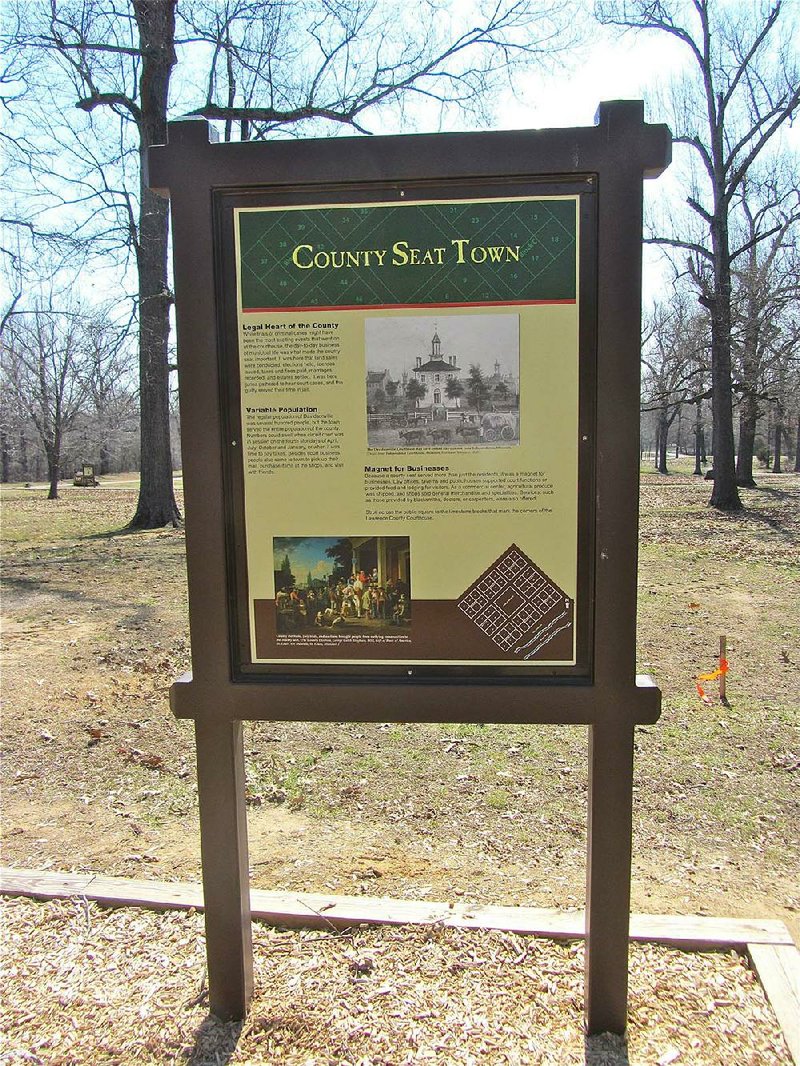DAVIDSONVILLE HISTORIC STATE PARK - Plenty of ghosts lurk around the early 19th-century settlement now encompassed by Davidsonville Historic State Park. They’re present in the figurative guise of vanished residents from long ago.
And sometime soon, there’ll be be visible “ghosts” at this pioneer community, described in a park brochure as “the birthplace of Arkansas’ current government.”
Work is beginning here on two so-called “ghost structures.” They’ll be skeletal constructions - like the frame of a tent - that provide a three-dimensional sense of what stood on the site two centuries ago. They’ll enrich the aura of the distant past that visitors with a radar for history can detect.
Archaeological sites like Davidsonville, on the Black River in present-day Randolph County 135 miles northeast of Little Rock, are starting to erect these see-through “ghost” outlines of buildings. The idea is to give visitors a 3-D feel, even when the actual appearance of vanished structures is unknown or uncertain.
For now, an active imagination is an asset in exploring Davidsonville’s former town site. The time trip is aided by a number of detailed, illustrated signs describing what life was like here before Arkansas became a state.
Prior to walking the Historic Townsite Trail, tourists can brief themselves on Davidsonville’s important role in Arkansas’ formative years after the Louisiana Purchase by viewing exhibits at the visitor center.
The town started out with just a few log cabins in 1815, as mapped out in a park brochure. It was established as the seat of Lawrence County, then a vast stretch of Missouri Territory that covered much of what is now northern Arkansas. That took place four years before the Arkansas Territory was created and 21 years before Arkansas statehood.
Dreams of wealth brought Davidsonville into being, a common theme in U.S. history. As the brochure explains, the town “was founded by a group of businessmen hoping to make fortunes in land speculation as the United States expanded into its western territories.”
Davidsonville soon boasted Arkansas’ first post office, first courthouse and first land office - thus the “birthplace of government” label.
Then as now, a post office was a big deal for a small town. As a park brochure reports, Adam Ritchey was officially appointed postmaster on June 28, 1817. He was the first of five postmasters at Davidsonville. Mail arrived by horseback roughly every 30 days on its way from St. Louis to Arkansas Post.
The first courthouse in Arkansas Territory was a two-story brick building erected in Davidsonville in 1822. Before then, court sessions were held in private homes and businesses. Stephen F. Austin, later famed as a founder of Texas, briefly presided over the circuit court here before heading farther west.
But Davidsonville’s importance proved fleeting. Once bypassed by the Southwest Trail, then the main overland route from St. Louis to the Mexican border, the settlement dwindled to nothing.
The reasons for its failure are noted in the brochure: “Multiple factors including transportation difficulties, river flooding and competition from other towns led to Davidsonville’s abandonment after only 15 years.”
That left the ghosts of early Arkansans, here as elsewhere along rivers in the eastern reaches of the Natural State.
Davidsonville Historic State Park lies along Arkansas166, about 10 miles southwest of Pocahontas. The park’s visitor center is open 8 a.m.-5 p.m. daily. Admission is free. Call (870) 892-4708 or visit ArkansasStateParks.com.
Weekend, Pages 38 on 04/24/2014
